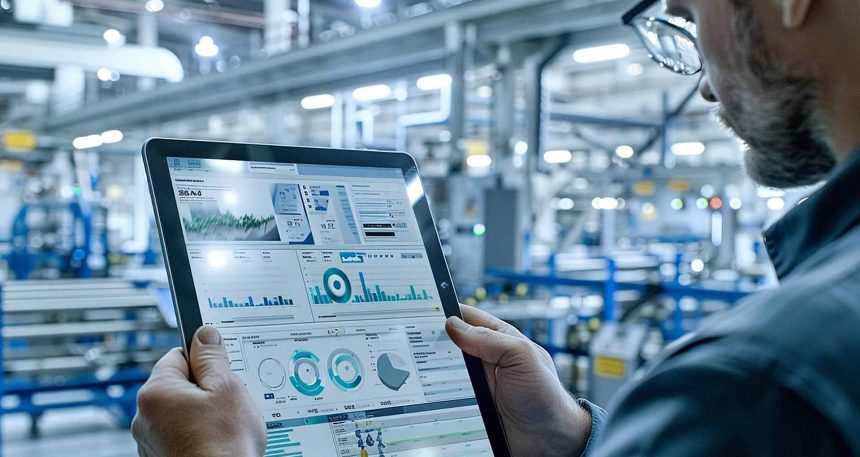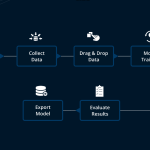Unlock Your Potential: The Power of AI-Assisted Engineering
The Future is Now: Embracing AI in Your Engineering Toolkit
The landscape of software development is constantly evolving, and at its forefront is the transformative power of artificial intelligence. For engineers, embracing AI-assisted tools isn’t just about staying current; it’s about unlocking unprecedented levels of productivity, creativity, and efficiency. This guide delves into the practical applications of AI in engineering, offering actionable insights to supercharge your workflow and push the boundaries of what’s possible.
Whether you’re a seasoned developer or just starting, understanding how to leverage these cutting-edge technologies can significantly impact your projects. We’ll explore how AI can automate repetitive tasks, enhance code quality, and even spark innovative solutions, making the engineering process more dynamic and rewarding.
What is AI-Assisted Engineering?
AI-assisted engineering refers to the use of artificial intelligence technologies to augment and improve various aspects of the engineering lifecycle. This includes everything from initial design and development to testing, deployment, and ongoing maintenance. Instead of replacing human engineers, AI acts as a powerful co-pilot, handling complex computations, identifying patterns, and suggesting optimizations that would be time-consuming or impossible for humans alone.
Think of it as having an intelligent assistant that can analyze vast datasets, predict potential issues, and offer intelligent suggestions. This synergistic approach allows engineers to focus on higher-level problem-solving and strategic decision-making, ultimately leading to better outcomes.
Key Areas Where AI is Revolutionizing Engineering
The impact of AI is far-reaching, touching nearly every facet of the engineering discipline. Here are some of the most significant areas:
1. Code Generation and Completion
Tools powered by large language models (LLMs) are becoming incredibly adept at generating code snippets, suggesting entire functions, and even writing boilerplate code. This dramatically speeds up the initial development phase and reduces the likelihood of syntax errors.
2. Debugging and Error Detection
AI can analyze code for potential bugs and vulnerabilities with remarkable accuracy. By learning from vast code repositories and past error patterns, these tools can proactively identify issues that might otherwise go unnoticed, saving countless hours in debugging.
According to a report by [External Link: Gartner on AI in Software Engineering], AI-driven code analysis is projected to reduce critical bugs by up to 40% in the coming years.
3. Automated Testing
Creating comprehensive test suites can be a labor-intensive process. AI can help by generating test cases, optimizing test coverage, and even predicting which parts of the code are most likely to fail, allowing for more efficient and effective testing strategies.
4. Performance Optimization
AI algorithms can analyze system performance data to identify bottlenecks and suggest optimizations. This could involve tuning database queries, optimizing resource allocation, or recommending architectural changes for better efficiency.
5. Project Management and Planning
AI can assist in project planning by predicting timelines, identifying potential risks, and optimizing resource allocation. This leads to more realistic project plans and better resource utilization.
Practical Tips for Integrating AI into Your Engineering Workflow
Adopting new technologies can feel daunting, but integrating AI into your engineering workflow can be a smooth and rewarding process. Here are some actionable steps to get you started:
- Start Small: Don’t try to overhaul your entire workflow at once. Begin with a single tool or task where AI can offer a clear benefit, such as code completion or basic error detection.
- Experiment with Tools: Explore various AI-powered tools available for your specific programming language or development environment. Many offer free trials or freemium versions.
- Understand the Limitations: AI is a powerful assistant, not a replacement for human expertise. Always review and validate AI-generated code or suggestions. Critical thinking remains paramount.
- Continuous Learning: The field of AI is evolving rapidly. Stay updated on new tools, techniques, and best practices by following industry leaders and engaging with the developer community.
- Focus on Collaboration: Discuss your experiences with AI tools with your team. Sharing insights and best practices can accelerate adoption and collective learning.
The Future of Engineering: A Human-AI Partnership
The future of engineering is undoubtedly a collaborative one, where human ingenuity is amplified by the computational power and analytical capabilities of AI. As AI tools become more sophisticated, they will enable engineers to tackle increasingly complex challenges and drive innovation at an unprecedented pace.
This partnership allows engineers to move beyond the mundane and focus on the creative, strategic, and human-centric aspects of their work. The ability to rapidly prototype, test hypotheses, and optimize designs with AI support will unlock new possibilities in fields ranging from aerospace and automotive to healthcare and sustainable energy.
The integration of AI is not just about efficiency; it’s about elevating the role of the engineer. It empowers us to solve bigger problems, build more robust and intelligent systems, and ultimately, create a better future. The key is to approach this integration with an open mind, a willingness to learn, and a focus on how these tools can best serve our human-driven goals.
Call to Action
Ready to transform your engineering capabilities? Explore the latest AI-assisted tools and start integrating them into your workflow today. Share your experiences and insights with the community to foster innovation and collective growth!



